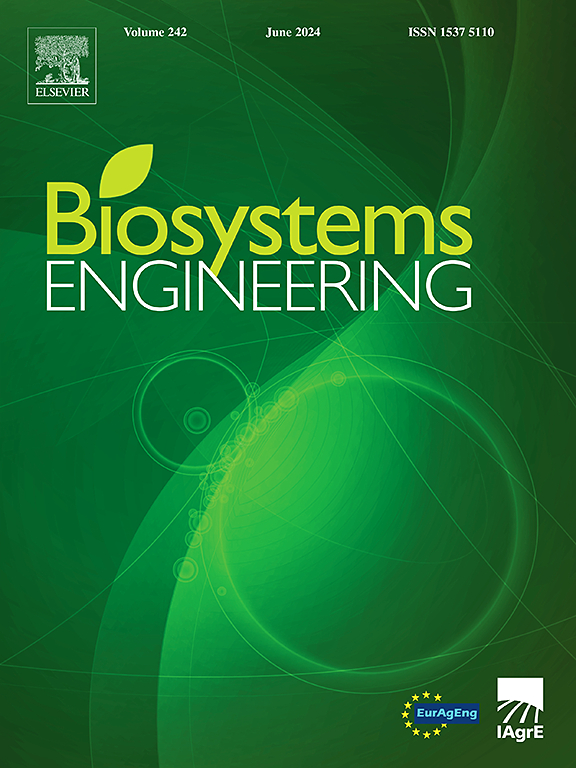基于计算机视觉的家畜异常检测方法与挑战综述
IF 4.4
1区 农林科学
Q1 AGRICULTURAL ENGINEERING
引用次数: 0
摘要
随着畜牧业生产的快速发展,计算机视觉作为一种无创、有效的牲畜异常检测技术受到了广泛的关注。尽管它具有潜力,但在复杂的情况下仍然存在挑战,例如难以区分正常和异常状态,异常的固有复杂性和可变性,以及导致漏检和误报的环境因素。本文综述了近六年来计算机视觉在家畜异常检测中的发展和应用。首先,介绍了该领域的研究现状,按物种、国家、年份和设备应用等方面对所收集的文献进行了分析。其次,在空间、时间和时空维度上对各种类型的异常及其相应的检测方法进行了分类。最后,对数据、任务和模型方面的挑战进行了深入讨论,提出了解决这些挑战的可行方案,并强调了未来研究的前景。我们建议促进多学科研究人员之间的合作,以解决在检测、识别和跟踪牲畜个体异常方面的挑战。这些挑战包括收集异常样本的困难,异常的不确定性和变异性,以及牲畜之间的高度相似性,所有这些都阻碍了有效的长期监测。本文章由计算机程序翻译,如有差异,请以英文原文为准。
Methods and challenges in computer vision-based livestock anomaly detection, a systematic review
With the rapid advancements of livestock production, computer vision has attracted considerable attention as a non-invasive and effective technology for detecting livestock anomalies. Despite its potential, challenges persist in complex scenarios, such as the difficulty of distinguishing between normal and abnormal states, the inherent complexity and variability of anomalies, and environmental factors that contribute to missed detections and false positives. This paper provides a comprehensive review of the development and applications of computer vision in livestock anomaly detection over the past six years. First, the current research status in this field is introduced, analysing the collected literature by species, countries, years, and equipment applications. Next, various types of anomalies and their corresponding detection methods across spatial, temporal, and spatiotemporal dimensions are categorised. Finally, an in-depth discussion of challenges related to data, task, and models is offered to propose practical solutions to these challenges, and highlight promising directions for future research. We recommend fostering collaboration among multidisciplinary researchers to address challenges in detecting, identifying, and tracking individual anomalies in livestock. These challenges include the difficulty of collecting anomalous samples, the uncertainty and variability of anomalies, and the high similarity among livestock, all of which hinder effective long-term monitoring.
求助全文
通过发布文献求助,成功后即可免费获取论文全文。
去求助
来源期刊

Biosystems Engineering
农林科学-农业工程
CiteScore
10.60
自引率
7.80%
发文量
239
审稿时长
53 days
期刊介绍:
Biosystems Engineering publishes research in engineering and the physical sciences that represent advances in understanding or modelling of the performance of biological systems for sustainable developments in land use and the environment, agriculture and amenity, bioproduction processes and the food chain. The subject matter of the journal reflects the wide range and interdisciplinary nature of research in engineering for biological systems.
 求助内容:
求助内容: 应助结果提醒方式:
应助结果提醒方式:


